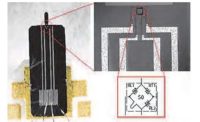For medical device manufacturing, quality is crucial. To ensure quality in production, audits of the manufacturing facilities by a government health organization are standard. The audits and inspections are not, however, standard between countries. The Medical Device Single Audit Program (MDSAP) is looking to change that.
MDSAP is an audit program designed from the International Medical Device Regulators Forum (IMDRF), an organization dedicated to harmonizing global regulations on medical devices. Specifically, the program was designed by IMDRF representatives from Australian, Brazilian, Canadian, Japanese and United States health organizations to satisfy the regulatory requirements of their five markets with a single audit. The program standardizes regulatory practices and procedures to promote consistency and transparency.
According to Mark Swanson, president of H&M Consulting Group, the goal of MDSAP is to harmonize procedures to make it easier for products to be sold worldwide. The program has been implemented in the five founding countries and is being observed by the European Union and the World Health Organization for possible future participation.
As of the first of the year, Health Canada required any manufacturer selling medical devices in Canada to have passed or scheduled a MDSAP audit. Australia uses the program to supplement inspections by the Australian Therapeutic Goods Administration. Brazil has implemented the program, requiring the audit before products can be placed on the market, but is supplemental due to a lack of inspectors. The U.S. uses the program as an alternative to regular FDA inspections.
The benefits of MDSAP for manufacturers are numerous. Because the audits meet the standards in multiple countries, the program helps companies to sell their products more easily in international markets. MDSAP includes a cohesive audit model with tasks and criteria that are publically available.
“All of the information is available, which lets companies see the exact expectations of the audit,” says Swanson. “The program is completely transparent, and everyone can understand exactly what will be done [in an audit].”
The audit is also consistent. Every audit follows the exact same steps, as laid out in the publically available model, and the results are all based on the same scale of nonconformity. Manufacturers are encouraged to prepare using the audit model and companion document online.
The audits are based on a scale of nonconformity where the ideal score is 0. The indirect impact score is between 1 and 4 whereas the direct is 3 to 5. The higher the score, the higher the level of risk. All audit results are reported on the MDSAP database. Additionally, because the U.S. allows the MDSAP audit in place of the FDA inspection, the FDA can use these scores to drive a “for cause” inspection if the standards aren’t met.
The MDSAP audits are less subjective, either compliant or not, and the level of noncompliance relates to the safety of the product. MDSAP doesn’t add any new requirements, when considering each country’s own requirements and it works with ISO13485 which means that manufacturers need to comply with standard, as well.
For companies considering participating in MDSAP, Swanson reassures that the audits aren’t anything new or something to fear.
“The major difference is that it looks at the manufacturing process as a whole, bringing together the regulatory and quality systems. The way this audit reviews the connections in the quality systems might be unfamiliar,” notes Swanson. “In the end, I think companies will find it helpful.”
Swanson also suggests using the available information to your advantage. With the entire program—including the actual audit—accessible online, manufacturers can be completely prepared before they even schedule an audit.
“The regulators’ primary focus is that manufacturers produce safe products. MDSAP is driving the harmonization of requirements worldwide to better serve patients,” says Swanson.


